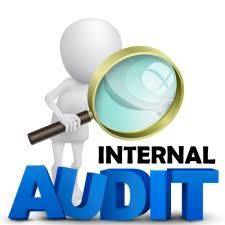Do your processes work? At what rates of success? How do you know?

Auditing is a word most businesses instinctively recoil from with worries about cost, meeting external expectations or being judged unfairly. The prospect of auditing is often considered something best avoided, but there is another way. Audits do not always have to be externally driven. Internal auditing can beat your annual regulatory auditor to the punch on identifying issues, and more importantly, can allow opportunity to improve business through process analysis.
A well-run internal audit program can identify weaknesses and opportunities for improvement. Auditing will help to standardize processes and support predictable outputs that can become measures for growth projections. Internal process auditing has even been shown to improve employee commitment. Staff morale and buy-in naturally follow when management demonstrates a commitment to evaluating the need for things like better tools, work environment and staff training.
When thinking about implementing an internal audit program though, the single most important thing to consider is this; at the end of the day, if your organization isn’t its own biggest critic, someone else will be. Implementing an internal audit program is not only beneficial, it can be a relatively low cost, self-maintaining system when structured properly. Implementation can be outlined in a few broad steps.
Training
Organizations planning to launch an internal audit program should always begin with training. Cost and length of courses can range from an afternoon to several days and are generally priced commensurate to other industry trainings. Auditor courses are offered throughout the US by many organizations including ISO registrars like BSI, industry organizations like the American Society for Quality (ASQ) and other private third-party providers. Before enrolling in a course, it is important to vet the provider for reputation and knowledge. When dispatching staff to train, instead of sending a single person, send several trusted employees from various roles in the business. Having multiple perspectives on the training and the benefits of auditing will offset the cost of training more than one person and provide a well-rounded vision for the intended program.
Transparency
A second key element to implementing a successful audit program comes in its transparency. Making performance data and process conformance a public conversation ensures ethical auditing and management investment in improvement initiatives. Self-identified issues that are resolved and tracked reflect very positively in the eyes of compliance auditors and provide a company an edge by identifying issues. When employees see management commitment to earnest transparent auditing by giving those with first-hand process experience the opportunity to provide their insight into processes staff become more invested in supporting and executing processes correctly which provides the best of both worlds; engaged staff willing to support the designated process and metrics to reflect the success of (or need to remodel) that process.
Follow-Through
A final component to successful internal evaluation is committed follow-through to any audit findings. Many companies fail to follow through here. If an audit identifies nonconformances or opportunities to improve and they are ignored it can be demoralizing to everyone involved. A company can’t fix everything at once, but if a pattern of ignoring findings develops it can erode the efficacy and benefits of an audit program. Programs designed with tracking and controls built in can provide assurance that reported issues are addressed and that feedback is recognized. Corrective and Preventative Actions (CAPAs) are an excellent documentation tools for driving actions and ensuring audit findings are consistently resolved. When audit reports are available and everyone is looking at the same data, strategic shifts and process improvement initiatives become less surprising or mysterious.
When internal auditing is founded on solid training and multiple perspectives and remains transparent in action and consistent in response, the benefits provided become myriad. Employees can become more involved, leadership receives honest and measurable feedback, data analysis allows for growth projections and improvement initiatives begin to sprout up providing time and cost savings. When faced with the previously dreaded external audit by a customer or regulatory agency they will be pleasantly surprised to know you speak their language and if a nonconformance is discovered that you have already identified and documented, it will likely be skipped in the external audit report. When you have convinced your auditors that you are making an earnest effort to improve, the dynamic of the relationship shifts to a collegial annual visit with more collaboration than confrontation.
Need help making your next project a success? Contact us today to get started.
